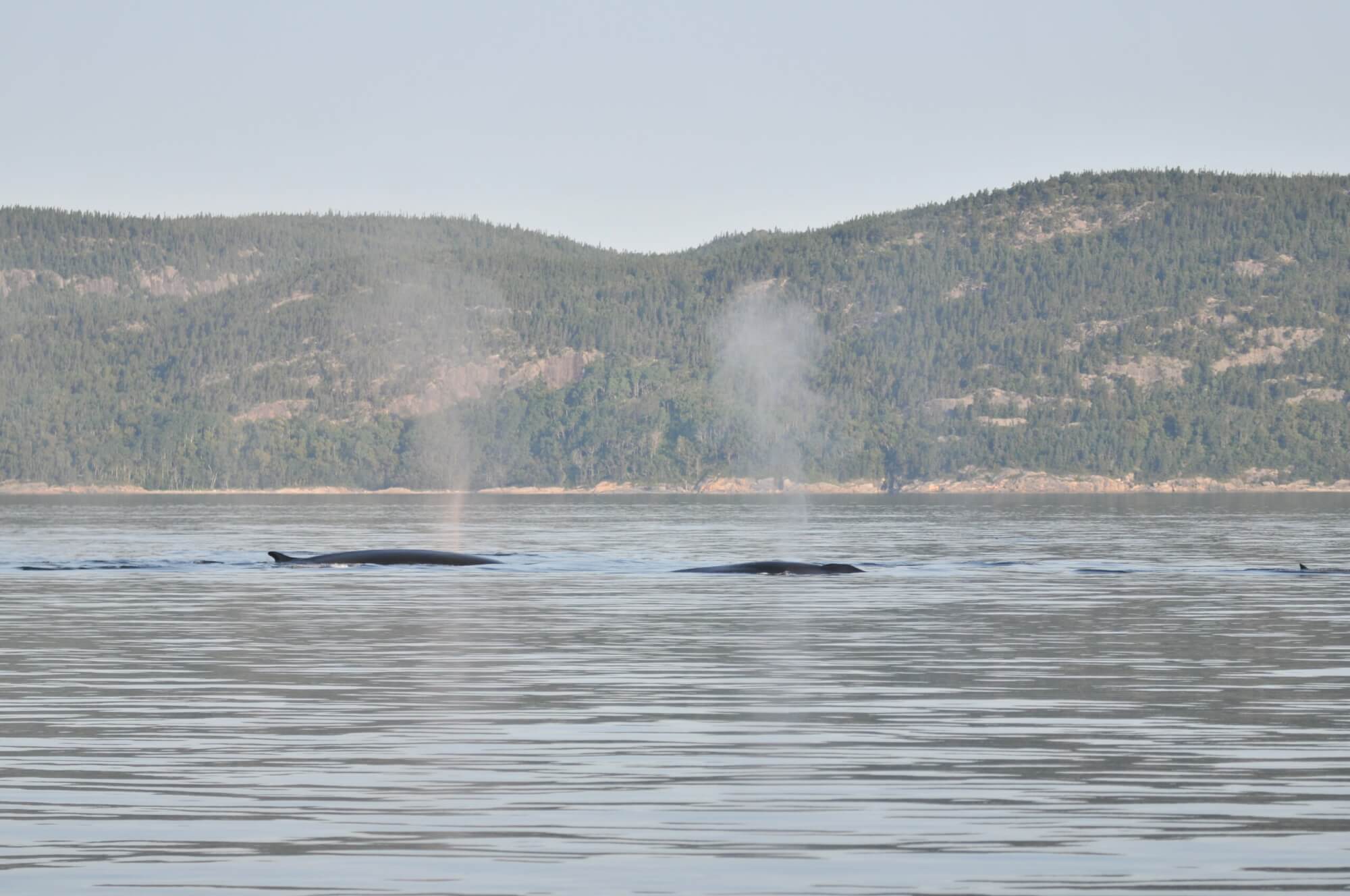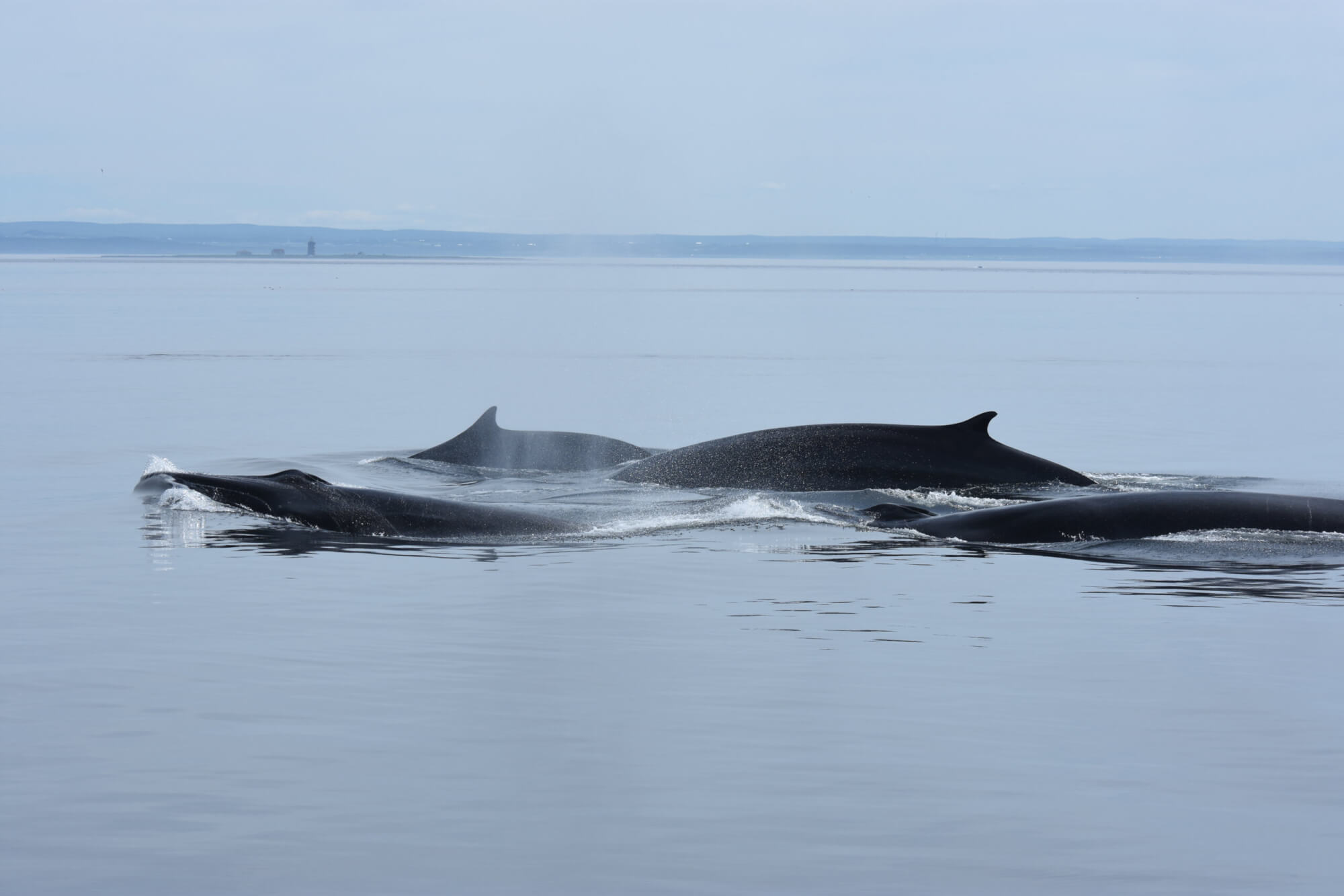All at once!
Composed of 13 adults swimming eastbound off the coast of Sept-Îles, the group was observed by the Sept-Îles Education and Research Centre (CERSI). Second largest mammal in the world, the fin whale is quite impressive even when alone. A group of 13 individuals therefore makes for a rather jaw-dropping observation!
Anik Boileau, researcher and co-founder of CERSI, was on the water at the time of the event. She says the group of fin whales reminded her of a passing train. “They were always moving in the same direction,” she adds. The sighting was captured on video. We see the fin whales coming to the surface to breathe while moving for a little over a minute and a half. The individuals then dive as a single entity.
This synchronized breathing and diving behaviour was observed on two other occasions by the research team. The gathering of fin whales eventually swam away and resurfaced for another breather sequence. Given the distance of the individuals and the shifting weather conditions, the scientists chose to leave the area.
During the entire observation, the whales were synchronized in their movements, in their dives and in their breathing. According to video analysis and notes taken during the sequence, there are believed to have been three “leaders” in the pod. These individuals were always at the front of the group and swam parallel to each other with a spacing of approximately one body length between each of them. The other individuals swam behind these whales, always parallel and in groups of no more than six. No other whales were recorded in the area during this event, allowing the scientists to conclude that it was a single group.
Amazing behaviour
Synchronized movement, also known as collective navigation, is well known in birds. In this phenomenon, individuals on the go follow the micro-movements of those around them. Flocks of birds therefore fly along the same trajectory, creating the impression of a single entity. Offering advantages for protection from predators or in the search for territory or food, these congregations are rather spectacular. Collective navigation is also commonly observed in fish.
At the current time, no knowledge of collective navigation in fin whales seems to exist in scientific literature, though this social behaviour has been studied in other marine mammal species such as the bottlenose dolphin and the killer whale. The July 13 observation therefore provides insight into the behaviour of the fin whale, which has been designated vulnerable by the International Union for Conservation of Nature (IUCN).
Offering advantages for protection from predators or in the search for territory or food, these congregations are rather spectacular. Collective navigation is also commonly observed in fish.
At the current time, no knowledge of collective navigation in fin whales seems to exist in scientific literature, though this social behaviour has been studied in other marine mammal species such as the bottlenose dolphin and the killer whale. The July 13 observation therefore provides insight into the behaviour of the fin whale, which has been designated vulnerable by the International Union for Conservation of Nature (IUCN).
Imitating others to find one’s way
When they were spotted in the summer of 2021, the fin whales seemed to be “travelling from Point A to Point B,” explains Anik Boileau. It is possible that the individuals were heading toward an area with high prey density,adds the researcher. Since whales feed in summer in the Estuary and Gulf of St. Lawrence, it is possible that the group was moving toward a feeding ground where food was relatively plentiful.
Additionally, this behaviour might also be a way for whales to better orient themselves spatially. Even if their hearing and vision are well suited to their deep sea environments, evaluating distance and direction is not always so straightforward. Travelling together might therefore be a way to overcome the obstacles they face.
It is believed that each individual relies on cues from other members of the group that help them navigate their marine environment. It was also speculated that the fin whales’ two-tone jaws might help them move in sync. Indeed, as half of their jaw is white, this visual clue may help them locate one another in space and in relation to each other.
On the other hand, some studies tend to show that large groups of cetaceans on the move are less cautious than groups of two or three individuals with regard to ships sailing in the area. Other observations such as the one made by CERSI are therefore needed to fully understand the impacts of this group behaviour on cetacean well-being.








